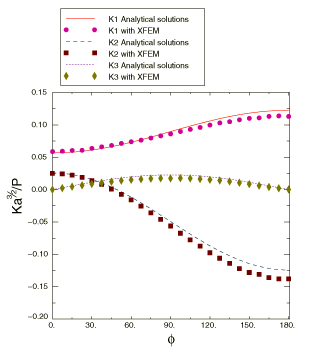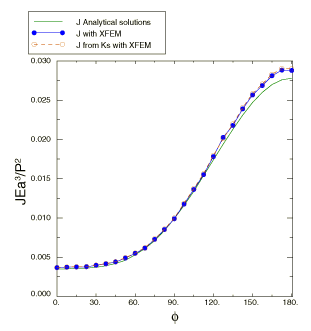Problem description

The geometry analyzed is a penny-shaped crack in an infinite body, subjected to concentrated forces P and R, as shown in the above figure. The size of the body is chosen big enough relative to the crack radius, a, such that an infinite body containing a small penny crack can be modeled. The ratio of lengths 0.66. The material is linear elastic, with Young's modulus = 200 GPa and Poisson's ratio = 0.3. Two remote points on the z-axis in the body are fixed to prevent rigid body motion. The loading is 400 MN.



